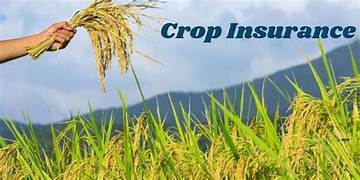Greenhouse farming offers numerous advantages, including controlled environments, extended growing seasons, and protection from adverse weather conditions. However, even with these benefits, greenhouse growers face risks that can threaten their crops and livelihoods. Crop insurance emerges as a crucial tool in mitigating these risks. In this article, we delve into the complexities of crop insurance for greenhouse growers, exploring its significance, intricacies, and key considerations.
Understanding Crop Insurance:
Crop insurance serves as a safety net for farmers, providing financial protection against losses caused by various perils such as adverse weather, pests, and market fluctuations. For greenhouse growers, whose operations are often capital-intensive and sensitive to environmental factors, having adequate insurance coverage is paramount.
Types of Crop Insurance for Greenhouse Growers:
- Multi-Peril Crop Insurance (MPCI): MPCI is a comprehensive insurance policy that covers multiple perils such as drought, excessive moisture, hail, wind, frost, and other natural disasters. It offers protection throughout the crop growing cycle, from planting to harvest, and can be tailored to suit the specific needs of greenhouse crops.
- Crop-Hail Insurance: While MPCI provides coverage for a wide range of perils, crop-hail insurance focuses specifically on hail damage. Greenhouse growers situated in regions prone to hailstorms may opt for this additional coverage to safeguard their crops against this specific risk.
- Revenue Protection Insurance: This type of insurance protects growers against fluctuations in crop prices and yields. It ensures a guaranteed revenue level, which can be especially beneficial for greenhouse operations with high-value specialty crops.
Factors Influencing Crop Insurance Premiums:
- Crop Type and Location: The type of crop being grown and its geographical location significantly influence insurance premiums. High-value specialty crops may incur higher premiums due to their increased risk exposure.
- Historical Yield Data: Insurers assess historical yield data to determine the level of risk associated with a particular greenhouse operation. Growers with consistent yields may qualify for lower premiums.
- Coverage Levels: The extent of coverage selected by growers directly impacts premium costs. Opting for higher coverage levels provides greater protection but may result in higher premiums.
Challenges Faced by Greenhouse Growers in Obtaining Crop Insurance:
- Lack of Data: Greenhouse operations often lack extensive historical yield data, making it challenging for insurers to accurately assess risk and determine premiums.
- Specialty Crops: Insurance for specialty crops grown in greenhouses may be limited or more expensive due to their unique characteristics and susceptibility to niche risks.
- Policy Complexity: Understanding the intricacies of various insurance policies and selecting the most suitable coverage options can be daunting for greenhouse growers, especially those with limited experience in navigating insurance markets.
Tips for Greenhouse Growers When Choosing Crop Insurance:
- Work with Knowledgeable Agents: Seek assistance from insurance agents or brokers with expertise in agricultural insurance, particularly greenhouse operations. They can provide valuable guidance and help tailor policies to specific needs.
- Evaluate Risk Exposure: Conduct a thorough assessment of potential risks to your greenhouse crops, considering factors such as climate, pests, and market volatility. Choose insurance coverage that adequately addresses these risks.
- Review Policy Terms Carefully: Pay close attention to policy terms, coverage limits, deductibles, and exclusions. Ensure that the chosen policy aligns with your risk tolerance and financial objectives.
- Consider Government Programs: Explore government-sponsored crop insurance programs and subsidies available for greenhouse growers. These programs may offer cost-effective solutions and additional risk management tools.
Conclusion:
Crop insurance plays a vital role in safeguarding greenhouse growers against unforeseen losses and risks inherent in agricultural production. By understanding the complexities of crop insurance and making informed decisions when selecting coverage options, greenhouse operators can mitigate financial vulnerabilities and protect their investments. While navigating the intricacies of crop insurance may seem daunting, seeking guidance from experienced professionals and conducting thorough assessments of risk exposure can empower growers to make prudent choices that support the sustainability and resilience of their operations.




